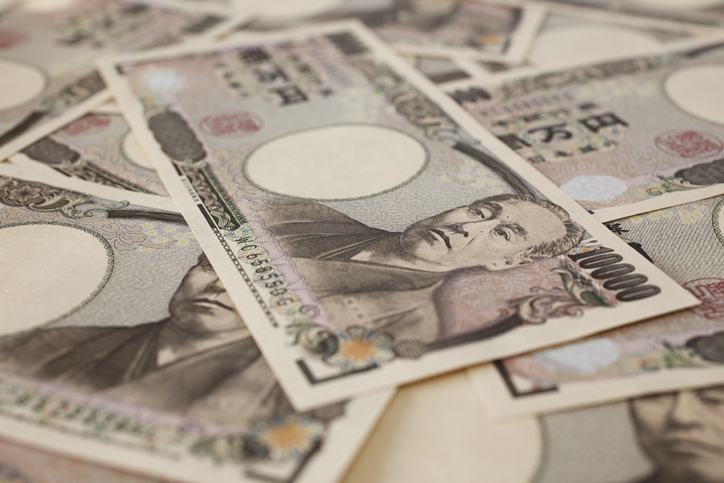 The Japanese yen is one of the most heavily-traded currencies among investors, as it boasts the prestigious reputation of being one of the few currencies that can justify description as a ‘safe haven’.Along with the Swiss franc and, most notably, the US dollar, the Japanese yen is a currency that many traders turn to for security in times of financial uncertainty.
The Japanese yen is one of the most heavily-traded currencies among investors, as it boasts the prestigious reputation of being one of the few currencies that can justify description as a ‘safe haven’.Along with the Swiss franc and, most notably, the US dollar, the Japanese yen is a currency that many traders turn to for security in times of financial uncertainty.
The long-term prospects of the Japanese yen indicate this traditional position as a safe haven should remain unaltered, although the yen may go through a significant period of transition if the currency becomes digitised.While it is not on the immediate horizon for the Japanese yen, a forward-thinking embrace of technology may enable the currency to gain ground against the US dollar and other major currencies.Assessing the recent performance of the Japanese yen
To understand the fate of the Japanese yen in the fiscal year, it’s useful to think about what forex trading is and how it works .
The performance of the Japanese yen against other major currencies is one of the most significant points of interest for traders in foreign exchange markets.The Japanese yen is in rarefied company as one of the seven currencies that makes up 80% of forex trading, with USD/JPY established as one of the most popular currency pairs.
Those trading on forex markets buy one currency in a pair and sell the other, so the fortunes of one currency become inextricably linked to the fortunes of another.In the case of USD/JPY, traders may choose to sell the US dollar in order to acquire Japanese yen.This is only a move that investors would take if both the US dollar was looking vulnerable and the Japanese yen was looking robust.
So far in 2020 the relationship between the two has remained steady, with the USD/JPY currency pair consistently flirting with the 107 mark.
The August 9 level of 106.80 is similar to the value from the same period in the previous year, reflecting the stability in a pair that consists of two safe havens.However, this doesn’t tell the whole story of the fiscal year thus far.
In May 2020, Japan fell into a recession, with the Bank of Japan naturally anticipating a slow recovery.In the April-June quarter, the Japanese GDP contracted by around 26% .However, that bleakness was surpassed elsewhere, with the US economy shrinking by around 33% in the same period.The rest of the year for the Japanese yen will be determined by how quickly other struggling economies recover from their slump, and how quickly the Japanese economy rebounds.Balancing safe haven past with potential digitisation boom
Japanese Yen
It may well be the case that fintech and digitisation provide the platform for Japan to recover at a greater pace, and therefore steal a march on their economic rivals that are still tackling the consequences of GDP declines and recessions.
This bold approach could potentially undermine the Japanese yen’s position as a safe haven, although this should not be an issue as the currency has not always been so trusted by investors.
It was only really in the aftermath of the Japanese banking crisis in the 1990s that the yen began to appear safer to traders.New policy measures undertaken by the Bank of Japan, including innovative introductions like quantitative easing and near-zero interest rates, enabled the economy to recover and rebuild, with investors growing confident that the Japanese government had learnt its lessons from the banking crisis.
The idea of digitising the Japanese yen has gained momentum in recent months.In February 2020, Kozo Yamamoto, a senior member of Japan’s ruling party, suggested that a digital yen should arrive in the next two or three years .Yamamoto suggested that a central bank digital currency (CBDC) would help the Japanese economy bridge the gap with the increasingly popular cryptocurrencies, while providing a viable challenge to the supremacy of the US dollar.
This is the position that the Chinese government appears to have taken, citing that a digital Chinese yuan could be a boon to emerging economies, so it will be interesting to see if the Japanese government make good on Yamamoto’s message and adopt the same stance as their powerful neighbour.
A CBDC would naturally have greater regulation than standard digital currencies, with Yamamoto having stressed the need for government-managed blockchain tech to track thefts and for Know Your Customer checks to verify identities on transactions of a certain value.
The potential for digitisation will make the Japanese yen one to watch among the trading community in the coming months and years.Anything that shifts the balance of power away from the US dollar, therefore, has significant knock-on effects on markets all over the world, while an ability to match the appeal of cryptocurrencies could reinvigorate the Japanese yen.For now, the immediate task for the Bank of Japan is to negotiate the remainder of a difficult fiscal year and alleviate the long-term impact of the recession.Share this:.